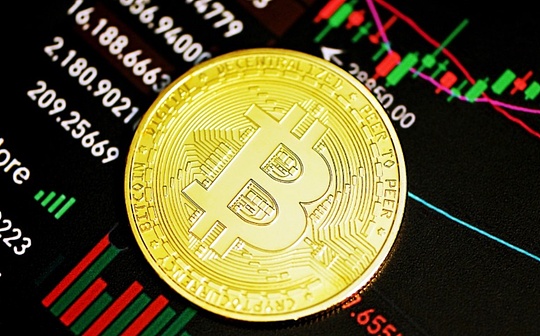
On the afternoon of August 27, the University of Hong Kong held the Crypto Finance Forum 2025.Among them, in-depth conversations focusing on the development of Web3, Binance founderChangpeng Zhao (CZ)With Vice President and Chair Professor of Finance at the University of Hong KongLin ChenConduct dialogues around the global Web3 landscape, core track opportunities and Hong Kong’s positioning.
From the global competition logic of stablecoins to the difficulties in implementing RWA (tokenization of physical assets), to the future game between centralization and decentralized exchanges, this dialogue has both vivid insights from front-line practice and macro-level trend judgments, providing a key perspective for understanding the role of Web3 ecology and Hong Kong.

1. Stablecoins: The “new carrier” of currency internationalization. How can Hong Kong break the USDT/USDC monopoly?
As the “infrastructure” of the Web3 ecosystem, stablecoins are the core starting point of this dialogue.Based on industry practice, Zhao Changpeng reviewed the development logic of stablecoins and directly pointed out the key proposition of Hong Kong’s creation of local stablecoins – at a time when USDT and USDC dominate, how to build competitive advantages based on offshore RMB or Hong Kong dollars?
1. The growth logic of stablecoins: from “help-averse tools” to “money expanders”
Early Positioning: Exchange’s “User Experience Patch”
When Binance was a cryptocurrency exchange (BB exchange) in 2017, it was found that users needed to withdraw their coins to the fiat currency exchange to cash when the price of Bitcoin fluctuated, which was a cumbersome experience.At this time, USDT was supported (and was still a niche at the time), and initially wanted to provide a “short-term safe haven”, but unexpectedly promoted its growth with the exchange ecosystem – Asian users’ demand for US dollars was difficult to meet through traditional accounts, USDT became an alternative, driving its second wave of growth.
The essence of business: “Invisible need” with low complexity and high profitability
The stablecoin business model is simple: after taking the card, the user’s fiat currency is received and the corresponding stablecoins is issued. The user’s reverse operation is used when redeeming, but it has become one of the most profitable tracks in the industry (side the exchange).Take BUSD, a compliant stablecoin that Binance once cooperated with, as an example. The market value increased to US$23 billion from 2019 to 2023, and did not rely on complex operations, and only relies on brand authorization and basic promotion (such as free withdrawal).
Global Game: “Extension of Monetary Hegemony” of US dollar stablecoins
Zhao Changpeng pointed out the key: USDT and other USD stablecoins are essentially “globalization tools” of the US dollar – the assets behind more than 100 billion US dollars are mostly invested in US Treasury bonds, and more than 90% of the users are outside the United States, which is equivalent to helping the US dollar penetrate into areas that cannot be covered by traditional finance.This has direct implications for the internationalization of the RMB: If Hong Kong can promote offshore RMB or Hong Kong dollar stablecoin, it can become the “Web3 channel” for the RMB to go global.
2. Hong Kong’s Challenges and Opportunities: Balance between Compliance and Liquidity
Core contradiction: The conflict between foreign exchange control and free circulation
As a native asset of blockchain, stablecoins naturally have the attributes of free circulation across regions, and are under tension with traditional foreign exchange controls.Zhao Changpeng believes that although there is no “perfect solution”, more than 20 countries around the world have explored legal currency on the chain. Hong Kong can rely on its offshore financial advantages to design flexible mechanisms (such as targeted circulation scenarios) within the compliance framework.
The United States’ “first move”: Consolidating advantages through legislation
In July 2024, when the United States introduced the stablecoin regulatory framework (GDS), it simultaneously proposed to restrict central bank digital currency (CBDC).Zhao Changpeng interprets: This move is intended to support the US dollar stablecoin – CBDC is difficult to be accepted by the market due to its strict supervision and low freedom (more than 20 countries around the world have failed to issue CBDCs), and the high liquidity of the US dollar stablecoin is more in line with industry needs. Hong Kong needs to learn from this idea of ”policy adapting to the market”.
2. RWA: A “false proposition” for physical assets to be put on the chain?Financial assets are the breakthrough
As the discussion on “everything can be tokenized” heats up, RWA (tokenization of physical assets) is regarded as the next incremental track in Web3.But Zhao Changpeng bluntly stated that the difficulty of RWA implementation is far beyond expectations.Only assets close to finance and highly transactional properties can be provided first, not all assets are suitable for on-chain.
1. The “life and death line” of chain assets: liquidity and price fluctuations
“Fatal Flaws” of Non-Financial Assets: Insufficient Liquidity
Taking Hong Kong Real Estate as an example, even though house prices fluctuate greatly, they are still “low-volatility assets” compared to cryptocurrencies.After tokenization of this type of asset, due to small price fluctuations and weak trading demand (insufficient order book depth), large amounts of funds are difficult to enter and exit (such as 100 million funds cannot be cashed out quickly), and instead falls into a vicious cycle of “low liquidity → fewer transactions”, and may even be manipulated in a short-term due to light trading.
The “natural advantages” of financial assets: digitalization and high transactionality
Financial assets such as stocks and bonds have been highly digitalized and have high transaction frequency, making it easier to adapt to the “ledger attributes” of blockchain.Zhao Changpeng takes the United States as an example: The United States tries to tokenize stocks, but there is still a problem of “price disconnection” (such as the stock tokens issued by XStop are not linked to the actual stock price). The core reason is that the regulation does not clarify that “tokenized stocks are securities or commodities”, resulting in a blurred compliance path.
2. Hong Kong’s opportunity: Relying on the Hong Kong Stock Exchange, seize the opportunity to “global asset listing”
Zhao Changpeng raised a key question: If the Hong Kong Stock Exchange does not promote asset tokenization, will it lose its global influence?He took the development of China’s Internet as an example – without Tencent and Alibaba, the e-commerce market might be monopolized by Amazon.Similarly, if the US takes the lead in achieving stock tokenization (attracting global investors), other regions will fall into a passive position.For Hong Kong, the advantage lies in the global influence and policy flexibility of the Hong Kong Stock Exchange: At present, US policies have clearly supported asset digitization. If Hong Kong can accelerate the clarification of the RWA regulatory framework (such as distinguishing securities/commodity attributes and simplifying license applications), it can attract global assets to be chained through Hong Kong to form an “Asian RWA Center”.##
3. Exchange competition: How does Hong Kong build a “world-class exchange”?Mobility is the core moat
During the conversation, Professor Lin Chen raised a key question: If Hong Kong wants to become a Web3 center, how should it cultivate world-class exchanges?Zhao Changpeng dismantled the core contradictions in the current development of the exchange from the three dimensions of cost, liquidity and compliance.
1. “Misconception” of traditional regulatory thinking: “localized isolation” does not work
Cost Trap: Copy the exchange’s “billion dollar investment”
The infrastructure of large exchanges (such as security wallets, compliance systems) requires billions of dollars and requires hundreds of top security experts to maintain.If the exchange is required to build a “localized system” (full isolation of servers, data, and teams) for Hong Kong, it is equivalent to rebuilding an exchange, which is extremely costly and difficult to recruit matching talents – for commercial institutions, this kind of “repeated construction” is not feasible.
Liquidity Fatal: Small markets cannot support “effective trading”
Hong Kong has a population of only 8 million. If the exchange is restricted from serving only local users, it will fall into the dilemma of “few users → low liquidity → large price fluctuations”: for example, buying 10 bitcoins may lead to “high slippage” (increased costs) due to shallow order book, and large orders cannot be traded; on the contrary, global exchanges can protect users through the “deep order book” due to the large user base (hundreds of millions of users) and sufficient liquidity.
2. Hong Kong’s breakthrough direction: From “conservative pilot” to “open adaptation”
Policy Iteration: Keep up with the global pace and simplify compliance
Zhao Changpeng acknowledges Hong Kong’s policy progress: the Digital Assets Act issued in May 2024 (precedeed before the United States), as well as high-frequency communication with the industry (including exit institutions), reflects the advantages of “flexible adjustment”.In the future, further product restrictions need to be relaxed (such as fewer crypto assets that can be listed on the Hong Kong Stock Exchange currently), attract more projects to settle in, and form a positive cycle of “many products → users come → sufficient liquidity”.
Ecological collaboration: Relying on existing global exchanges, not “newly built from scratch”
The core of world-class exchanges is “liquidity and globalization”. Hong Kong does not need to “start a new start”. It can attract existing global exchanges (such as Binance) to operate in compliance in Hong Kong through policies, while allowing them to access global liquidity – not only reducing the construction costs of local institutions, but also rapidly enhancing Hong Kong’s influence as a “Web3 trading node”.
4. Centralized vs. Decentralized exchange: not substitution, but complementary
With the rapid growth of decentralized exchanges (DEXs) such as Hyperliquid and Uniswap, the market is concerned that “centralized exchanges (CEXs) will be replaced.”However, Zhao Changpeng believes that the two are not opposites, but a “complementary ecology” that serves different needs.
1. Current situation: CEX is still the “first choice” for getting started, and DEX needs to break through the “user experience level”
CEX’s core value: lowering the threshold for Web3
For users who have just entered Web3 (especially Web2 migration users), CEX’s “email + password” registration, customer service support, and fiat deposits are more in line with usage habits; while DEX requires users to master wallet operations (such as address and private key), and the interface is mostly “code and garbled” (such as contract address), which is difficult for ordinary users to understand, and they also need to prevent MEV attacks (Zhao Changpeng admitted that he was also “sitting orders”).
Advantages of DEX: Regulatory dividends and privacy needs
The stricter requirements for CEX’s KYC (identity authentication) have been made in the United States and other regions, which has instead created a demand for DEX – the characteristics of no KYC and free transactions, attracting privacy-sensitive users.In addition, DEX currently has high handling fees and relies on token incentives (such as issuing coins to subsidize users), but in the long run, technological progress (such as Layer2 expansion) will reduce costs. After the token incentive is withdrawn, real user demand will support its development.
2. Future: The scale of DEX may exceed CEX within ten years, and Hong Kong needs to reserve “policy space”
Zhao Changpeng predicts that within 5-10 years, with users’ familiarity with their wallets and DEX technology optimization, their scale may exceed CEX; 20 years later, DEX may become mainstream.Hong Kong needs to consider DEX’s compliance framework in advance (such as how to protect users without stifling their flexibility) to avoid missing this track due to excessive supervision.
5. Web3+AI: It is not a concept, but a “new scenario of trading at a hundred billion yuan level”
In addition to Web3, Zhao Changpeng also shared his views on “Web3+AI” – the combination of the two is still shallow, but in the future, it will give birth to a “new economic form” rather than a simple “concept hype”.
1. Core logic: AI requires “Web3 currency and transactions”
AI’s “payment pain points”: traditional finance cannot meet
The interaction between AI Agents (such as booking air tickets, design services, and content distribution) requires high frequency and small payments, while traditional finance (credit cards, bank transfers) have cumbersome processes and high handling fees, which cannot support “micro transactions that grow by million times” (such as an article charges 0.01 yuan to 100,000 readers).On the contrary, digital currency can achieve “second-level receipts and zero handling fees” through blockchain, perfectly adapting to AI’s payment needs.
Transaction Size: AI will drive Web3 transactions to “grow 1,000 times”
In the future, everyone may have hundreds of AI agents (such as booking hotels, replying messages, and managing assets). The interaction between these agents (financial + non-financial) will generate massive transactions – Zhao Changpeng gave an example: AI has helped them process video translation and release. In the future, such scenarios will be popularized, and the transaction scale will be more than 1,000 times that of the current one, and it is mainly “micro transactions”, and can only be carried through Web3.
2. Hong Kong’s Opportunity: Seize the “AI+Web3” Infrastructure
Zhao Changpeng believes that the combination of AI and Web3 requires “infrastructure first”: such as developing digital currency payment interfaces that are adapted to AI and establishing a micro-transaction compliance framework.If Hong Kong can make advance arrangements in this field (such as supporting AI companies to use local stablecoins and simplify micro-transaction supervision), it can become a global experimental field for “AI+Web3”.
6. Conclusion: Hong Kong’s Web3 Opportunities – Finding a Balance Between “Order” and “Innovation”
At the end of the dialogue, Professor Lin Chen summarized: The value of this conversation lies in the integration of “macro order” and “first-line practice” – Professor Lin’s academic perspective provides “framework thinking”, while Zhao Changpeng’s sharing reveals “real market demand”.For Hong Kong, the key to becoming a global Web3 center is to maintain the bottom line of compliance (such as foreign exchange risk control of stablecoins and RWA asset rights confirmation), but not to restrict innovation (such as relaxing exchange liquidity and reserve policy space for DEX and AI+Web3).
As Zhao Changpeng said: “The development speed of Web3 is far beyond imagination. When Binance was founded 8 years ago, BNB rose by more than 10,000 times; now, the seemingly distant tracks (such as RWA, Web3+AI) may explode within a few years.” If Hong Kong can seize the current window period of “flexible policies and global capital attention”, it may be able to embark on a “oriental characteristic” development path in the global competition of Web3.







